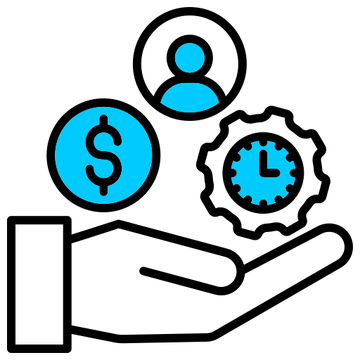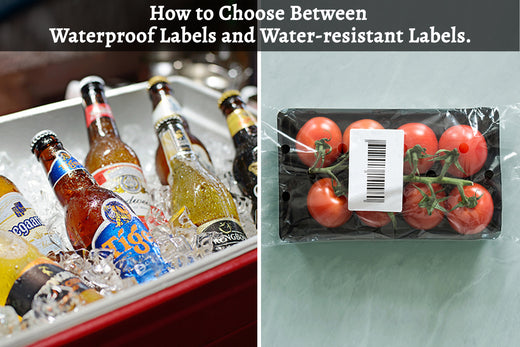

Removable Film Labels
Written by: Beichen Lu
|
|
Time to read 3 min
Many of you have inquired about the waterproof or water-resistant properties of Betckey labels. It seems that there is still confusion regarding the distinction between the two. Considering labels that will come into contact with water regularly and be handled daily, understanding the difference becomes crucial. In this blog post, we aim to address some significant inquiries about waterproof and water-resistant labels.
Table of Content
Water-resistant labels can withstand some level of moisture exposure, although not to the same extent as waterproof labels. These labels are specifically created to repel water and liquid substances, including oil-based liquids that may be present in the product itself. They are ideal for products that will have limited contact with moisture, such as food items sold in jar containers. In simple terms, water-resistant labels will remain intact and undamaged if they are sprayed with water, as opposed to being completely submerged.
Understanding the storage conditions and potential exposure of your product is crucial in determining whether you require fully waterproof labels or if water-resistant labels will suffice.
For instance, labels on shampoo and body wash products that are stored in the shower should be waterproof to withstand constant exposure to water. Similarly, packaging labels on beverages placed in ice-filled coolers should also be waterproof to endure the wet environment.
However, labels on food items that are stored in kitchen cupboards or refrigerators, where they may encounter slight moisture but not direct wetness, can typically hold up well with water-resistant properties.
Ultimately, the goal is to choose label materials and adhesives that can endure the challenges of transportation and usage without deteriorating or falling apart.
The choice of label material can have an impact on determining the most suitable label for your requirements. If you find yourself undecided between opting for a waterproof label or a water-resistant label, consider factors such as the product type, its intended usage, and your desired label aesthetics. Assessing these aspects will help you make an informed decision regarding the most appropriate label choice.
Specific types of products are prone to significant moisture exposure, including beverages (such as beer and wine), cosmetics, water bottles, and glass jars. These items require labels that can withstand continuous wear and tear in such conditions. Waterproof BOPP labels are designed to endure water and chemicals, making them suitable for these purposes.
In contrast, other products, such as dry goods, paper products, and shopping bags, may not encounter consistent water exposure. For these items, a water-resistant label would suffice, and in some cases, a water-resistant label may not even be necessary.
Both custom waterproof and water-resistant labels contribute to conveying a message of quality to your customers. Demonstrating attention to detail in every aspect of your packaging will be appreciated by customers. Therefore, it is crucial to dedicate sufficient time to this process. Before diving into the design phase, it is important to understand the key components typically included in a product label:
Once you have a clear idea of what information you want to incorporate into your label, you can proceed to select colors and fonts that align with your product and brand vision. For instance, if you aim for a simple and minimalistic aesthetic, using muted colors and classic fonts on a white background can be effective.
Above all, it is vital that the content on your label is legible and enables customers to gain a better understanding of your product. Therefore, selecting the appropriate combination of colors and fonts that ensures readability for everyone is of utmost importance.
Cost is an important consideration when deciding between waterproof and water-resistant labels. Waterproof labels tend to be more expensive due to the higher cost of materials used in their production, while water-resistant labels made from paper offer a more economical option. If your product does not require complete submersion in water, a water-resistant label would be suitable.
In certain product lines, such as beverages, the advantages of using waterproof labels made from BOPP (biaxially oriented polypropylene) outweigh the cost. However, it's important to note that costs for both types of labels can vary based on factors like size, cut type, and order quantity.
If the issue still need more help, don't hesitate to contact us by cs@betckey.com and our technicial expert will help you choose the level of adhesive that best suits your products. We have accumulated a large number of customer cases and we won't let you down.
If you want to buy thermal labels or sticker paper, you can check out more on our store
Products Featured In This Blog

24/7 support team

Multiple Payment Methods

Worry-free shopping

Delivery in 3-7 business days
Be the first to know about label discounts,
product launches, and time-saving tips — subscribe now!
Are you 18 years old or older?
Sorry, the content of this store can't be seen by a younger audience. Come back when you're older.
They are exactly what I need, very easy to use!!!
Everithing was really good, fast delivery, product quality 100% guarantee
Very versatile label for mailing addresses and a marketing to promote a product or get someone’s attention.
Brother DK-2205 Compatible Continuous Labels 2.4" x 100'
Great little labels to use in pricing jewelry. Saves a lot time when you use with a thermal printer. I use on the hang tags and other display cards. Will definitely reorder in the future.
The label is perfect it's very recommended to everyone
iLabel 4x6 Thermal Shipping Label Printer Bluetooth Wireless
Dymo 30256 Removable Film Waterproof Shipping Labels 2-5/16” x 4”






